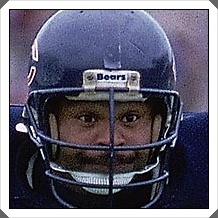Focus Training For Peak Athletic Performance
“One reason so few of us achieve what we truly want is that we never direct our focus; we never concentrate our power.  Most people dabble their way through life, never deciding to master anything in particular.” Tony Robbins
Most people dabble their way through life, never deciding to master anything in particular.” Tony Robbins
Whether it is focusing on an idea or maintaining proper body position during athletic performance, keeping your mind in the game is sometimes not easily accomplished. Yet, the ability to focus on a specific internal or external event at just the right time is the essential for athletic peak performance.
Our conscious mind is capable of giving attention to and processing 8 to 12 thoughts per second. This capability represents nature’s way of helping us adapt to an ever changing environment. However, in our present society adapting requires “the taking possession by the mind, in clear and vivid form of one of what seems like several simultaneous possible objects or trains of thought” (William James, 1890).
The ability to focus and concentrate is a mental strength skill that can be learned, and through practice can be improved to help with reaching peak sport performance.
In this post I’m going explore several different tactics that you can use in focus training. They will range from the simple to complex and come from both Eastern and Western approaches.
In the “Art of Mindful Living”, Thich Nhat Hanh illustrates wonderfully how Eastern meditative techniques can be applied to everyday situations that can be easily adapted for athletic performance.
His philosophy emphasizes the numerous benefits of being mindful (focused) on what you are doing while you are doing it. One of his basic focusing exercises uses a common technique in focus training. The premise is that it’s easier to concentrate on a physical sensation than on a thought. This exercise is called ‘breathing in and breathing out.’
You basically begin with focusing your attention on the sensation of taking air into the lungs and as you are doing this silently say to yourself this is my in breath.
Then as you exhale, pay close attention to the sensation of letting air out of your lungs and silently say to yourself this is my out breath.
Go ahead and try this right now…go on…it’s OK,, no one is watching.
That’s right, just stop reading for a few moments and be mindful of your breathing as you take air in and let it out …. Pause ….
Many people, including athletes and coaches, who use this simple mental strength focus training exercise are surprised how quickly they can attain a slight yet powerful internal shift of focus and disconnect from other thoughts or experiences that previously had their attention.
This exercise is an excellent introduction to the ability we really do have to intentionally direct our focus and the type of awareness connected with being highly focused.
Taking a more complex and scientific perspective, Dr. Robert Nideffer (1993), a leader in sport attention research, suggests that there are two independent dimensions of attention focus:
- Attention width
- Attention direction
Attention width refers to the number of inputs (stimuli) that a person is focusing and ranges from narrow to broad. A narrow attention focus involves focusing your attention on just one or a few inputs, which a broad attention focus involves focusing your attention on a large number of inputs.
Focusing on a specific muscle as you stretch would be an example of narrow attention focus while listening to music and looking at the crowd forming would be an example of broad attention focus.
The second element of attention focus is attention direction. This refers to whether you are focused internally or externally. An internal directional focus is when you direct your attention inwardly on your own thoughts or feelings.
An external attention focus involves directing your attention outwardly toward the environment.
These four types of attention focus can be combined in a two by two matrix to form four distinct focusing strategies: broad-internal, broad-external, narrow-internal, and narrow-external.
 By understanding that you can use the direction of focus in these different ways will allow you to train your focus and more effectively meet the demands of athletic competition.
By understanding that you can use the direction of focus in these different ways will allow you to train your focus and more effectively meet the demands of athletic competition.
Above we looked at the “breathing in and breathing out” exercise. This would require a narrow-internal focus. Riding your bike on a busy street would require a broad-external focus.
Dr. Nideffer recommends that attention focus training be used in exercises that approximate the attention demands of the tasks you want to improve. His research has shown that this specificity of focus training greatly enhances both focusing skills and subsequent athletic performance.
One application for improving performance that uses Dr. Nideffer’s focusing approach is known as ‘Focus Planning’. ‘Focus Planning’ look like any other type of planning, i.e. daily schedule, vacation, etc, in that it describes a series of events in a particular order.
Unlike vacation planning where these events may be sightseeing attractions, or lodging dates, focus planning is an itinerary of what you will be focusing on at different times or places over the course of an event such as your practice and training sessions.
A focus plan indicates when and where you will shift your attention focus from one pre-determined thought to another. Most of us have used focus planning when we remind ourselves to remember to stop for milk when we pass the Seven-Eleven.
However, focus planning can be even more helpful in situations that require a high degree of effort and concentration such as sporting and athletic events.
The mental strength skill of increasing your ability to intentionally focus your attention involves a number of methods ranging from simple to complex. Exercising the mind’s capacity to focus in these different ways leads to both increased concentration and mental flexibility that will lead to peak athletic performance.
As in all mental strength training, persistence and consistent practice will bring about the best results.
This topic is covered in more detail in “Mental Strength Training for Athletes.” You can pick up your copy along with a spectacular bonus HERE.


